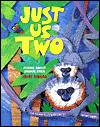 I spent more than thirty years teaching in an elementary school. Elementary educators give instruction in all subjects. It’s not an easy job--at least not if you want to do it well. I was always on the lookout for quality children’s books that could be used across the curriculum. I especially loved connecting science and poetry.
I spent more than thirty years teaching in an elementary school. Elementary educators give instruction in all subjects. It’s not an easy job--at least not if you want to do it well. I was always on the lookout for quality children’s books that could be used across the curriculum. I especially loved connecting science and poetry.Today, I have recommendations for several poetry books about animals that also include factual information about such things as animal camouflage, the life cycle of toads and monarch butterflies, insects, and different kinds of animals that inhabit meadows and ponds.
 WHERE IN THE WILD?:
WHERE IN THE WILD?:CAMOUFLAGED CREATURES CONCEALED…AND REVEALED
Written by David M. Schwartz
Photos by Dwight Kuhn
Tricycle Press, 2007
(Dewey Classification: 590)
The section on each animal includes a poem on the left-hand page and a photograph on the right-hand page--a photograph in which the camouflaged animal is difficult to spot. Readers can lift the photograph to find the hidden animal and read some interesting facts about it.
Here are excerpts from the poem and the informational prose taken from the section on the weasel.
From Silent and Still
I’m silent and still, till I leap out and pounce.
Even prey twice my size I can easily trounce.
To feast on a rabbit, a rat, or a mole,
I stalk it, then capture it deep in its hole.
"Some weasels have different wardrobes for summer and winter. As days grow short and brisk in northern areas, the short-tailed weasel, or ermine, trades its chocolate brown coat for white."
Where in the Wild? contains a nice variety of poems--including a haiku and two shape poems. Schwartz’s prose is clear and concise, and Kuhn’s photographs are exceptional. This book is a terrific package of poetry, prose, and photography--and would make an excellent classroom resource!
Check out Poetry in Non-fiction, a post written by David Schwartz for I.N.K.
 HEY THERE, STINK BUG!
HEY THERE, STINK BUG!
Written by Leslie Bulion
Illustrated by Leslie Evans
Charlesbridge, 2006
(Dewey Classification: 595.7)
Hey There, Stink Bug! is a nonfiction poetry book that is sure to appeal to children. The book contains nineteen poems about a variety of insects and spiders--including the stink bug, aphid, Japanese beetle, dung beetle, and fireflies. It also has information about the “little” creatures written about in the poems. Many of the book’s poems are rhythmic and rhyming. A number of the poems also include a touch of humor--as does The Hot Shot.
The Hot Shot
Bombardier bombardier bombardier beetle,
slow on the wing but thinks fast on its feetle.
Blasting poor predators into retreatle,
with boiling hot acid it aims from its seatle.
Excerpt from the prose paragraphs about the bombardier beetle: "When an enemy bothers a bombardier beetle, two chemicals mix inside the beetle and explode with a pop into acid spray."
Bulion has written her poems in a number of different poetic forms that include haiku, limerick, cinquain, kyrielle, and a Shakespearean sonnet. In addition to being a poetry book that could be used across the curriculum in science--it would also be a great resource for introducing children to different types of poetry.
The back matter of the book includes a glossary, a list of Web and book resources, and a section called Poetry Notes. In Poetry Notes, Bulion provides information about the types of poems she wrote for this book.










Love, love, love this post! William and I are reading all about butterflies and just read Butterflies Fly last night. We both enjoyed it.
ReplyDeleteTricia,
ReplyDeleteThanks! I thought I might as well include links to my previous reviews of poetry books with information about different kinds of animals along with the two new reviews. It's great having a blog archive as a resource.
BUTTERFLIES FLY has beautiful illustrations, doesn't it?
Great post! I also love books that mix genres, and a good poetry/nonfiction book can be hard to find...
ReplyDeleteActually, your post reminded me of Lizards, Frogs and Polliwogs, which I'm now going to pull out to share with my son!
Thanks, Jenny! My favorite Florian poetry book is INSECTLOPEDIA. Have you read that one? My elementary students loved it. It's available in paperback now. If your son likes LIZARDS, FROGS, and POLLIWOGS--I bet he'd like this book, too.
ReplyDeleteElaine,
ReplyDeleteI don't know Insectlopedia and will have to check it out! Thanks for the recommendation!
Elaine-
ReplyDeleteThese are all great recommendations. My kids (students) are writing about animals and they have just discovered how poetry can also be a resource for learning non-fiction info. These titles will be perfect. I feel like you are such an excellent resource for me as a teacher. Thanks so much!
Katie,
ReplyDeleteI agree about poetry being an informational resource. I loved connecting poetry with the study of science in my classroom. After my students finished working on their animal research reports, they wrote some wonderful poems about the animals in their reports.
Hello Elaine,
ReplyDeleteI'm thrilled that you enjoyed Hey There, Stink Bug!
I can't wait to check out the other titles you mentioned that I haven't read yet.
I enjoyed your poems, too!
All best,
Leslie B.
Leslie,
ReplyDeleteI wish HEY THERE, STINK BUG! was available when I was still teaching in an elementary classroom. We did a science unit on insects--with a focus on butterflies and moths. I was always looking for poetry to integrate with that curriculum unit.
I'm glad you enjoyed my poems.
Great post! Eisha gave me that Hey There, Stinkbug!. Good stuff.
ReplyDeletejules